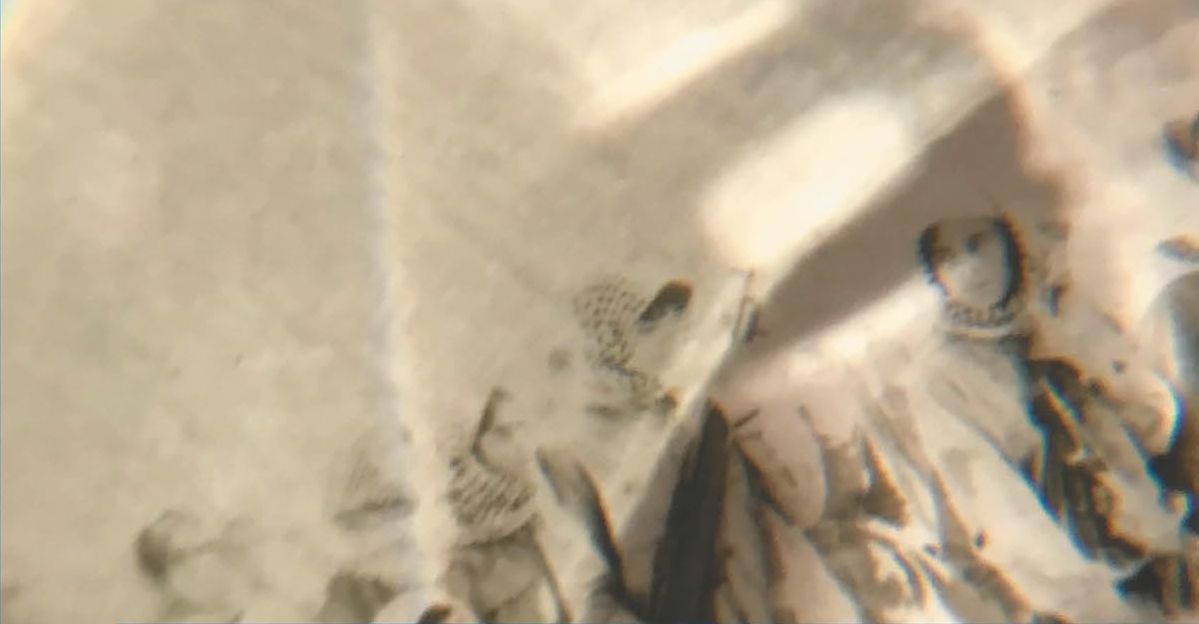The Keeper of Fish
Alan Fish (edited by Philip Salom)
Keeping Carter
MA Carter (edited by Philip Salom)
Puncher & Wattman Poetry
Poetry is popularly considered to be an art of the self. When the figure of the poet is parodied, it’s most often as an emo in a puffy shirt, a narcissistic creature of absurdly heightened sensibility. Like any caricature, it’s an image that is wildly incomplete and that, at the same time, contains an element of truth. Recently in the Boston Review, critic Marjorie Perloff acidly outlined the contours of ‘a certain kind of prize winning, “well-crafted” poem – a poem the New Yorker would see fit to print and that would help its author get one of the “good jobs” advertised by the Association of Writers & Writing Programs’.
According to Perloff, such a poem looks like this: ‘1) irregular lines of free verse, with little or no emphasis on the construction of the line itself or on what the Russian Formalists called “the word as such”; 2) prose syntax with lots of prepositional and parenthetical phrases, laced with graphic imagery or even extravagant metaphor (the sign of “poeticity”); 3) the expression of a profound thought or small epiphany, usually based on a particular memory, designating the lyric speaker as a particularly sensitive person who really feels the pain, whether of our imperialist wars in the Middle East or of late capitalism or of some personal tragedy such as the death of a loved one.’
In Perloff’s anatomy, contemporary poetry is Romanticism’s inbred, decadent heir, delivered by way of the Confessionals to the contemporary creative writing market. The autobiographical self of the poet is central: it’s the poet’s sensitivity, his or her lived authenticity, that defines the authenticity of the poem. The formal aspects of the poem, ‘the word as such’, retreats in importance to a secondary characteristic: it is the superficial plumage with which the poet conducts his or her courtship of the reader. The personality of the writer, as promoted on a million websites, is the ‘branding’ of the poem, a necessary attribute in a swollen and fiercely competitive market. Never has the author been less dead.
Perloff, highlighting the ‘uncreative writing’ of poets such as Kenny Goldsmith or the aleatory techniques of John Cage, points out that poetry includes avant-garde traditions that push hard against this self-centred ideology. However, the culture that valorises the poetic self might be challenged through proliferation as much as through erasure. The most famous exponent of this approach is the Portuguese poet Fernand Pessoa, the inventor of the heteronym. The heteronym is more than a pseudonym – it’s the invention of an entire poetic personality, complete with biography, particular formal style and critical viewpoint. Pessoa produced, at last count, more than seventy.
Which brings me to Philip Salom’s recent trilogy, Keepers. The first collection, published in 2010, is Keepers (by ‘Philip Salom’): a series of linked poems that forms an implicit narrative about the staff and students of an unnamed School of Arts. Theatrical, playful and sly, the book is above all a dazzling and deft celebration of poetic form, underlaid by a bass note of mortality that gives its mischievous shape-shifting unsettling depths. The Keeper of Fish and Keeping Carter emerge from the first book: they are heteronymic collections, respectively by Alan Fish and MA Carter, edited by Philip Salom. Alan Fish figures in Keepers, mostly in footnotes, as a general dogsbody and cleaner who lives in the campus basement; we learn that he is a poet and is planning to publish a book. Carter is more mysterious: in Salom’s forward, he strongly suggests that this heteronym, who writes poetry ‘in secret’, is in fact a pseudonym.
For all the (slightly arch) editorial conceit, I’m not certain that these fictional selves quite qualify as heteronyms. Although both voices work a distinct mode or key, each seems the invention of a particular poetic consciousness. As George Steiner commented, Pessoa’s heteronyms were ‘exceedingly strange’: ‘For each of his “voices”, Pessoa conceived a highly distinctive poetic idiom and technique, a complex biography, a context of literary influence and polemics and, most arrestingly of all, subtle interrelations and reciprocities of awareness.’ Fish and Carter, although they share some of these characteristics, seem closer to what Pessoa called a ‘semi-heteronym’. Speaking of the semi-heteronym Bernardo Soares, Pessoa says that ‘his personality, although not my own, doesn’t differ from my own but is a mere mutilation of it’. In the case of the self-consciously misanthropic Carter and the alienated and melancholy Fish, mutilation seems like the proper adjective: their poems reveal that they are both, in different ways, damaged men.
What is unarguable is that this prismatic refraction of selves has been extraordinary liberating for Salom. Both collections are buoyed with a sense of lightness and freedom, a formal curiosity that expresses itself as a rhythmic and sonic joyousness in the DNA of the poems. If sometimes I felt that both the Carter and Fish collections lacked the continuous invention of Keepers, with some of the lesser poems thinning out into mere poetic fictions, the books have a linguistic and dramatic energy that makes you keep reading. And both collections include some fine poems. Fish, for instance, in the poem ‘Dream for a Daughter’, meditates on the complex grief of watching his daughter grow up and become estranged from him, creating a startlingly ambiguous and spare emotional delicacy:
One of her wings has broken off
in my hands. I stare helplessly.The stump of its shoulder root
protruding like lamb’s hornfrom her skin. She is so pale
and innocent she hasn’t noticed …
In contrast, Carter’s voice is driven by anger. As he says, ‘my flag is the choleric’. This results in some very funny poems (‘Old Cunts’, for instance) in which outrage screws the language into pitiless focus, and a few, those in which wit or linguistic tension slackens, that are merely vicious. Mostly they sustain their own suspensions. In ‘Jesus saves me’, Carter sardonically contemplates redemption while chopping onions, the onion tears, a purely physical response, paradoxically becoming a genuine expression of sadness. Many of the poems turn on violence – political violence, murder – a theme that bleeds into smaller, but equally significant, violences of the psyche. In the poem ‘Drive In Screen’, for instance, representation itself becomes a kind of death:
It looked like Death in a strange
white coat. It became Sybil
tinnily through metal speakers
propped on the car windows.
She was hideous. And she was
everywhere. She was a window
the terrible transfer of her face
smeared across it, the shattered
glass of a shattered window
her wrists dragged themselves
Onto …
Perhaps Salom’s proper antecedent, especially for Carter, is the John Berryman of ‘Dream Songs’, and his alter ego, Henry. Like Berryman, Salom’s Carter works with comedic vexations, meditations that reach from the intimate to the metaphysical, a colloquial contempt, an encroaching despair that emerges as rage. The language is looser than Berryman’s, less wound around itself. This is, I think, partly a function of Salom’s prosaic punctuation, as opposed to Berryman’s emphatic dashes and ampersands.
There are complex reflective games going on in the trilogy: as well as referencing each other, the poems reach forward and back in a continuous meditation on culture as historical memory, personal expression or social construction. Carter – obsessed with Bach and Glenn Gould, the mathematically precise in tension with the improvised – tends to look outward, commenting on the society around him. Fish, unlike Carter, has an identity in this complex fictional reality, but all the same declares he is ‘anonymous. I learnt / myself from language’. He writes lyric poems about the incidents of his life – the death of his wife through cancer, his daughter, his aquarium.
Both poets share a common elliptical perception (both liken cats, for instance, to inverted commas) and a pleasure in linguistic play. And both circle endlessly around dilemmas of masculinity, sexuality and relationship, which become the axes of an increasing anxiety and alienation. Neither is, by any means, a reliable narrator. As Carter says, ‘The I is the biggest con artist in poetry’.
The Keepers trilogy as a whole is a full-frontal attack on the autobiographically authenticated poem that, all the same, often masquerades as precisely that kind of poem. Salom seems to be having his cake and eating it too. But what matters most is the language itself, the attention paid by Salom to ‘the word as such’: at its best, this distils into a formal spikiness and liveliness that makes these collections an experience of perpetual surprise.








